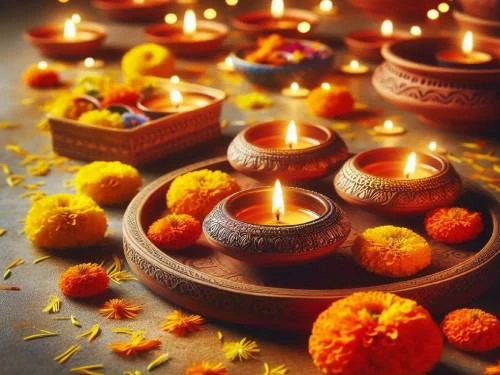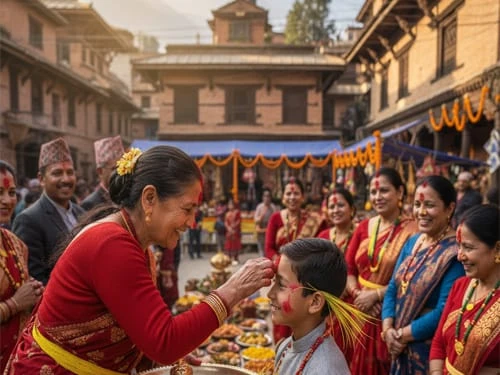Who are the Sherpas? History, origins, and culture of the Sherpa people
The Sherpas are an ethnic group of the northeastern part of Nepal. They are believed to have originated in eastern Tibet’s Kham region. Reports suggest that these people migrated to Nepal in the 15th century and have been residing in the Solu-Khumbu region.
Over the centuries, the Sherpas have adapted to the high-altitude environment. And are famous for their mountaineering skills. As their root are from Tibet, a unique blend of Tibetan and Nepali culture is seen in their lifestyle. There is a very interesting history of the Sherpa in Nepal.
Do you know about the origin of the word Sherpa? Well, the word itself is Tibetan. The word Shar represents east, while pa means people, meaning people of the east. Despite they have Tibetan origin and influence, they are famous as citizens of Nepal.
Besides their highly appreciable mountaineering skills, they are also famous for their mountain lifestyle, food, culture, and more. You will be thrilled by their traditions in the snowy world.
These people are deeply rooted in their culture, even in the 21st century. Their high belief in their ancestors and culture is really notable aspect of Peak Pikey trekkings. The Sherpa traditions are something very attractive and unique aspect in the Himalayas.
Let’s dive into the Sherpa Villages
Your Himalayan journey begins from Kathmandu. As you start trekking from Jhapre, you will see villages and a unique lifestyle. Most of the people in this village are actually Sherpas. Not just that, as you cross Junbesi Village, you will experience more Sherpa communities there.
Right from these villages to the upper Solu region, you will witness the unique Sherpa tradition. The Sherpa houses in this region are traditional. They are normally unique and made up of stone and wood. The architecture in this region is absolutely attractive, with two-storey houses with flat roofs.
Talking about such a preference in this region is to have protection against extreme cold. Normally, the lower part of their houses holds livestock, fodder, food, and firewood. Similarly, the upper level serves as living quarters, featuring wooden floors covered with carpets and rugs.
The Sherpas are absolutely welcoming and friendly in nature. You can interact with them if you know some of the Nepali words. Their hospitality is really praiseworthy. In these trekking routes, you will get many opportunities to capture the Sherpa villages and their lifestyle on your devices.
You will see them wearing their cultural dress, such as chuba, raatuk, kanam, tetung, and pangden. Their dress and local hospitality are a symbol of Sherpa traditions Nepal.
Monasteries and Religious Sites of Sherpas in Nepal
The lower Himalayas route allows you to visit many Buddhist monasteries and religious sites. These places offer a true spiritual dimension to the adventure. Also, these religious sites reflect Sherpa traditions in Nepal.
Thupten Chholing Monastery
Thupten Chholing Monastery is located in Dudhkunda Municipality, Phaplu, in Solukhumbu. This is a prominent religious hub in this region. You can find this place as a large monastic complex, which is a house for many monks and nuns. While visiting this place, you can do prayers, wheel prayers, visit the Lama School, and meditate in a cave.
Other Religious Sites
Other religious sites in the Solu region include gompas, monasteries, and prayer flags. You can witness the local rituals and ceremonies. Interestingly, the word Pikey is a sacred word itself. It is named after a deity of the Sherpas.
You will be thrilled by the daily life, culture, traditions, and customs of this region. As this place is less explored by people, you have an opportunity to enjoy the trek in peace.
Lhosar is their main festival, which they celebrate as a new year. They are Buddhist and believe in respecting their culture and traditions. They observe their festivals by doing the Syabru dance and playing local instruments.
Sherpa Cuisine
Sherpa cuisine reflects typical Sherpa traditions. However, you can also find a mix of Nepalese and Sherpa food in local lodges and tea houses. The main food in this region includes the authentic dal bhat, Thakali thali, momos, and Sherpa Stews.
You can try Sherpa Stew in teahouses or local hotels. This is a unique food made up of handmade noodles, meat, and vegetables. Likewise, the popular ingredient choices in this region include potatoes, buckwheat, and Tibetan bread.
Hot served foods are the main choice in the Sherpa culture. Also, they prefer hot and spicy food to remain warm. However, you can have both spicy and non-spicy food options in any hotels and tea houses.
Language and Communication in Sherpa Traditions in Nepal
Interacting with the locals can make your journey fun-filled and memorable. You can also get many ideas about the local atmosphere through communication. For that, you can use basic Nepali and Sherpa phrases when interacting with locals.
You don’t have to know many words; just greetings, thanks, food, help, goodbye, and praise words are enough. Tourist guides and porters can help you learn some of the basic words.
Respectful Travel with Sherpas in Nepal
As Nepal is a cultural and religious country, the people expect good manners from the guests, too. Similarly, you can also practice some good manners and respectful travel in the Himalayan trekking routes.
You can interact respectfully with Sherpa communities. It is better to avoid cultural faux pas. Using Nepali words for greetings can be an impressive move. Likewise, you should also be careful while walking in the village areas. Make sure you do not harm any cattle, animals, birds, or vegetation.
Supporting the Local Businesses of Sherpas
For your kind information, Sherpa in the Solu Region normally has a simple life. They are fully dependent on tourism and animal husbandry. Being a remote and high-altitude part, they have less access to a huge market or high financial opportunities.
You can support the local businesses and help them to raise their economic status. You can buy their handmade products and food items. The products put on sale are made with local raw materials, giving pure Himalayan vibes.
Likewise, local hotels, lodges, tea houses, and shops also expect your help as their customer. Visiting religious and cultural places can also help the locals get some economic benefits. Do this for both your cultural experience and to help them economically.
Sherpa Wedding Traditions in Nepal
Unlike other traditional weddings of Nepal, the Sherpa wedding traditions are very surprising. Actually, the wedding happens in multiple processes, taking several years. Just after marriage, the grooms have to live with the bride’s family for a period. The couple will return to the groom’s house only after the bride is pregnant. It is the most unique and interesting wedding tradition in Nepal.
During the wedding, the Sherpas wear along inner shirt named wan-ju and an outer garment called bakkhu. Similarly, the brides wear a red apron called a pangden. The wedding food mainly includes tsampa, Sherpa Stew, Tibetan flat bread, rildok, butter tea, and chhang.
Talking about the stages in marriage, the sodene or engagement stage happens at first. This is the stage where the boy’s family meets the girl’s family and asks for her hand. After that, Demchang or an agreement stage occurs, where they agree on the marriage terms and exchange gifts.
Then, Trichang is a Sherpa wedding tradition where the date of the marriage will be fixed. Pechang is another stage where the date and other rituals of marriage will be confirmed by an astrologer or religious gurus.
Once the marriage happens, the groom lives with the bride's family, and the pair returns home only after her pregnancy. The final stage of the Shepa wedding is Zendi. In this phase, the couple will be given a farewell by the bride's family with gifts and valuables.
Tipping Etiquette in Trekkings
Though tipping is not mandatory, providing it is highly appreciable. As you are aware of the fact that, trekking in the Himalayas, Nepal, is quite a risky task. The Sherpas, guides, porters, as well as other service providers devote themselves to such an extreme climate. So, rewarding them with a little tip can make their day.
If you have no idea about the tipping etiquette, look at the guidelines below:
Trekking Guide – $10–$15 per day, depending on the service quality you get throughout the journey.
Porters – $5–$10 per day per porter. They have to carry your heavy bags at a higher altitude.
Teahouse Staff – Around $1–$3 per meal or a small tip at the end of your stay. They provide you with hot and fresh food.
Drivers – If you hire a private jeep or bus, tipping $5–$10 is appreciated.
Group Tipping – If you are trekking in a group, pool tips together for fair distribution.
Breeze Adventure’s Sherpa Traditions Expeditions
Breeze Adventure Pvt. Ltd is a leading travel company in Thamel, Kathmandu. With many years of experience in every corner of Nepal, we have a 100 % success rate for various mountain trekkings. You can contact us for a breathtaking high-altitude journey in the Himalayas of Nepal.
In this adventure trekkings, you will have a close encounter with the epic Sherpa Traditions Nepal. Their unique lifestyle, culture, and hospitality are actually worth visiting. You will surely love their helpful nature and great friendliness. Their local cuisines and traditional dresses are also worth experiencing.
We will guide you to the Serpa Village and offer you an opportunity to have a great interaction with the locals. You can capture the moments and create lovely memories.
Frequently Asked Questions
Who is a Sherpa in Nepal?
A Sherpa in Nepal is an ethnic group connected to the Himalayas and has a unique mountain adaptability. Their ancestral root comes from the Tibetan-Nepali lifestyle with their strong habitat in the Eastern Nepal-Tibet border. They are famous for their strong connection to the snow and Mount Everest.
What is Sherpa Nepal?
Sherpa Nepal actually represents an ethnic group of Eastern Nepal that shows expertise in mountaineering. They have a unique adaptability in high altitude environment and can survive even in low oxygen.
What is the Sherpa Culture in Nepal?
The Sherpa culture in Nepal is a traditional lifestyle of people living in the Northeastern part. They are deeply rooted in their culture and live a traditional life even in this modern era. Actually, their culture is a blend of Tibetan and Nepalese traditions. Their hospitality, welcoming nature, and welcoming attitude are a gem for the visitors.
What is Sherpas Lifestyle?
Sherpas live in the Himalayan region of Nepal. They have adjusted well in the snowy world and lead a normal, traditional lifestyle. Most of them are engaged in animal husbandry, tourism, and herb collection. Likewise, the Sherpas live in small huts or stone houses. They have a typical village life and enjoy their festivals with their community.
Why Are Sherpas Special?
Sherpas are special because they have the ultimate mountaineering skills. Their strength and trekking skills make them different from the rest of the world. Tenzing Norge Sherpa, the first person to summit Everest is a Sherpa. Similarly, Kami Rita Sherpa, who has climbed Mount Everest the most times, is also a Sherpa. They are famous for their unique adaptation to the snowy world.
Are Sherpas friendly?
Yes, Sherpas are friendly and welcoming in nature. They show a warm respect and great hospitality to foreigners. Even after a long day trekking, they still hold a pleasant smile on their face. They are always helpful and have a cheerful attitude. The Western people have always admired the bravery and friendliness of the Sherpas in Nepal.
Why Do Sherpas Live So Long?
Sherpas live so long because of their unique genetic adaptability. They have been living in the thin air atmosphere of higher altitudes for hundreds of years. With time, they have developed a physiology that allows them to survive without altitude sickness or any kind of cold issues. With their smooth adaptability to the mountain region, they can live so long and healthily. With continuous walking, trekking, local food, and a cheerful attitude, they can generate energy even in minus temperatures.
Do Sherpas Drink Alcohol?
Yes, Sherpas drink alcohol. In fact, the Sherpas from Nepal are known for their traditional home-brewed beer called chhang. This is a traditional drink widely used on various occasions in Sherpa culture. The drink is mostly made up of rice, finger millet, or barley.
Can Sherpas Easily Climb Everest?
Though Sherpas are known for their highest Everest Climbing and skilled mountaineering, they still require a good physical and mental preparation before getting started. Climbing Everest is actually a challenging task that brings up altitude sickness, restlessness, lack of energy, and many other issues. So, no matter it’s Sherpa or anyother person, climbing Munt Everest has always been a matter of risk and thrill.
Why don’t Sherpas need oxygen?
Sherpas don’t often need oxygen for higher altitude trekkings such as Mount Everest. They have a strong physiological adaptation to the high mountain region. They also have experience with long acclimatization to the harsh conditions.
Has anyone climbed Mount Everest without Sherpas?
Yes, there are some individuals who have climbed Mount Everest without Sherpas and even without an oxygen supplement. However, for proper guidance and ease in the journey, you may need the help of Sherpas.
How Much Do Sherpas Get Paid on Everest?
Normally, Sherpas get around $5000 per expedition. Similarly, the Sherpa from Nepal assisting with the load normally gets $3000. They can also make more with the tips and allowance. Some Sherpas are earning even more with their businesses in the mountain region, such as lodges and services.
How often do Sherpas die on Everest?
About 39 % of Sherpas have died on the Everest Expedition amongst the death tolls in this region. Since 1992, more than 335 deaths have been recorded on Everest, and among those, about 129 are Sherpas. Lack of oxygen supplements and necessary things appears to be the reason for their deaths.
Where is Sherpa Village in Nepal?
Sherpa Village in Nepal is mostly found in the Solu-Khumbu Region near Mount Everest. Though Sherpas are also found residing in different places of the mountain area, Solu Khumbu is their major habitat. With their settlement, the village is popularly called Sherpa Village.
To visit the Sherpa Village and witness their culture and lifestyle closely, you can contact Breeze Adventure Pvt. Ltd. We are a team of experienced members with many years of expertise in mountain trekkings in Nepal. We have thousands of successful trekking records in various parts of Nepal.




